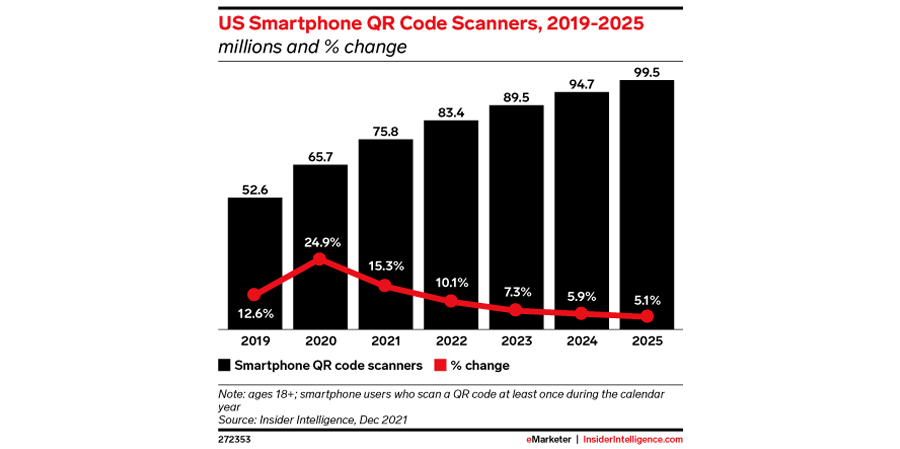The pandemic made QR codes more essential and ever-present. They have become an attractive tool for marketers, thanks to their ease of use and higher adoption rates.
- In 2022, 83.4 million US adult smartphone users (representing 37.5% of smartphone users) will scan a QR code. This share will rise to 42.6% by 2025.
- After a pandemic-induced spike in 2020, the number of smartphone QR code scanners in the US will increase at a compound annual growth rate (CAGR) of 8.7% through 2025.
Marketing and advertising strategists should focus on creating QR codes that enable more innovative, enjoyable, and useful customer interactions.
This can be achieved through gamification (including games to obtain discounts); access to promotions and deals; and information about product origin history and traceability, capabilities, or reviews.
- Adding a QR code to business cards, product packaging, brochures, print advertising, and direct mail can create another marketing touchpoint.
- QR codes on packages or package labeling can give consumers more product information than can fit on a label, according to Maryann Moschides, CMO of Scanbuy.
- In-store QR codes on purchase receipts, price tags, shelves, buildings, and even staff can enhance the shopping experience. Decathlon, a French sporting goods retailer, introduced an app that allows customers to bypass waiting in long lines by scanning QR codes on price tags and paying from the app.
…
This article first appeared in www.emarketer.com
Seeking to build and grow your brand using the force of consumer insight, strategic foresight, creative disruption and technology prowess? Talk to us at +971 50 6254340 or mail: engage@groupisd.com or visit www.groupisd.com/story


